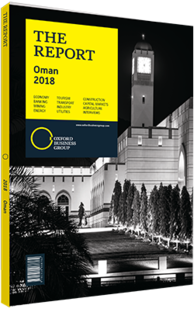Ben Ewing, Partner, CMS: Viewpoint

Viewpoint: Ben Ewing
The recent steep decline in international oil prices led to a considerable budget deficit in Oman, pressuring the country into hastening its economic diversification plans. In July 2016 the National Programme for Enhancing Economic Diversification received approval by royal decree.
The aim of this programme is to diversify the economy away from its heavy dependence on the oil and gas sector, and to encourage the development of a range of other sectors, such as renewable energy, manufacturing, mining, fisheries, tourism, logistics and transport, among others.
In this attempt to shift its economy away from relying on non-renewable resources, Oman has become an international leader in the field of unconventional oil and gas, and enhanced oil recovery (EOR). Oman is the first country in the region to develop a solar EOR project, with Al Miraah in 2014. It was established through a partnership between GlassPoint Solar and Petroleum Development Oman. It was financed by the State General Reserve Fund and the first phase of the project began in 2017, following its successful pilot phase.
The Oman Authority for Electricity Regulation (AER) is also currently developing the Sahim Project, involving the installation of solar photovoltaic panels on rooftops, which are connected to a grid for domestic and industrial use. However, while the AER has developed a regulatory framework for this particular project, there are still no royal decrees or statutes for the regulation of the burgeoning renewable energy sector in Oman.
The introduction of such laws could increase investment in the sector by creating guidelines for transactional, legal and policy-related issues concerning the development, implementation and commercialisation of renewables. With such legislation and policies in place, Oman could tap into a potentially significant market that could allow it to shift away – both economically and technically – from its reliance on the oil and gas sector.
Despite its relatively limited hydrocarbons resources, in addition to the substantial drop in oil prices in recent years, Oman continues to capitalise on this sector due to its strategic location bordering the southern end of the Strait of Hormuz, and its strong diplomatic and geopolitical relationships with neighbouring states.
The new oil refinery is central to the special economic zone in Duqm. It has been developed for the purposes of refining oil and gas, as well as for midstream oil and gas activities. Once the refinery is complete it is expected to have the capacity to process more than 230,000 barrels per day.
Oman’s close geopolitical relationship with Iran and the rest of the world has made it the prime location for developing a co-financed gas pipeline between a GCC state and Iran, in order to connect Iran’s gas reserves to Omani consumers and create liquefied natural gas plants for re-exporting internationally through Oman.
In terms of tourism and public transport, Oman has recently seen major developments in the logistics sector that allow for more practical, affordable and accessible public transportation. A new terminal is being built at Muscat International Airport, and numerous additional logistics and port development projects have been green-lighted.
The improved transportation sector is also considered to be part of the continued effort towards developing Oman’s economy because it will generate more work opportunities, particularly among the country’s unemployed nationals.
The efforts that have been made by the government to diversify the economy are promising, and with the proper legislation in place the government could help Oman accelerate its plans for Vision 2020 towards a more sustainable and diversified economy.
You have reached the limit of premium articles you can view for free.
Choose from the options below to purchase print or digital editions of our Reports. You can also purchase a website subscription giving you unlimited access to all of our Reports online for 12 months.
If you have already purchased this Report or have a website subscription, please login to continue.

